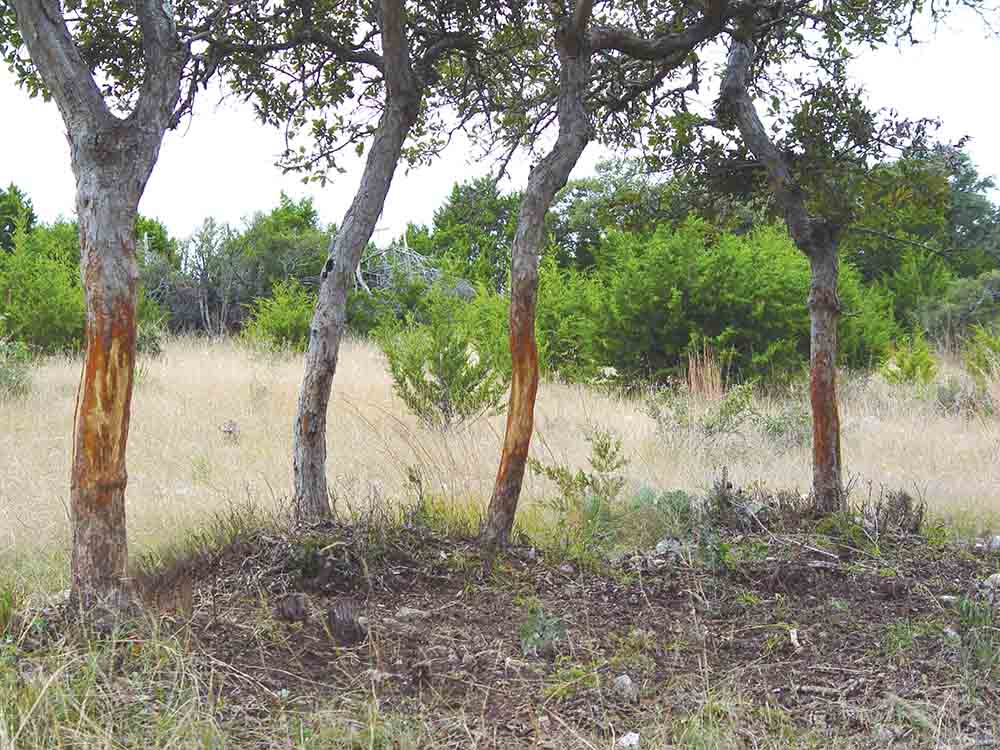In a Rut – Breeding Season Behaviors in Deer
The term "rut" is often used to describe a boring, monotonous routine or a trench worn in the ground by a wheel. However, if you hang around much in white-tailed deer hunting circles, chances are that it means something completely different.
The term “rut” is often used to describe a boring, monotonous routine or a trench worn in the ground by a wheel. However, if you hang around much in white-tailed deer hunting circles, chances are that it means something completely different. Many people use the term rut only in reference to the peak of the breeding season, but it really applies to a much more extended period of time. The rut refers to all behaviors and activities associated with the breeding season.
There are several behaviors associated with the rut. Rutting behavior typically begins around the time that velvet is shed from the antlers (coinciding with decreasing day length and increasing testosterone levels) and ends when antlers are shed (coinciding with declining testosterone levels). The first sign of rutting behavior is often sparring among bucks. Sparring may take place between bucks of equal stature or between a dominant and subordinate buck. Initially, these are usually short-lived, low intensity, pushing and shoving matches. These sparring matches may help establish the dominance hierarchy among males. As the peak of the breeding season approaches, sparring matches may give way to full-blown antler fights. These generally take place between bucks of similar hierarchal status.

Two other behaviors associated with the rut are “rubbing” and “making scrapes.” Both serve as scent signposts for olfactory and, perhaps, visual communication. A lot of rubbing behavior takes place shortly after velvet is dried and/or shed, but continues throughout the rutting period. A rub is initially made by a buck rubbing his antlers and forehead (for scent deposition) on a shrub or small tree. Once created, a rub may be used by several bucks or does. Generally, bucks begin “making scrapes” several weeks after the first rubs appear. This activity increases as the breeding season peaks and then declines throughout the remainder of the rutting period. A scrape is made by a buck pawing a spot of ground, usually to bare soil, and rub-urinating in that soil. A scrape is often associated with a low, overhanging branch which is often broken by the buck biting and/or pulling on the branch. Scent from the forehead, preorbital gland or mouth is often deposited on the broken branch. Much rubbing and scraping behavior is nocturnal.
In our service area in Oklahoma and Texas, the peak of the rut is generally in mid-late November. A common belief is that cooler weather is responsible for the increased rutting activity at this time; however, photoperiod is the primary contributor. During this two to three week period, most does come into estrous for the first time of the season. Does are receptive for around 24 hours. If they are not bred during this time frame, they generally recycle in three to four weeks. A doe will recycle several times; however, failure to conceive during the first or second estrous period may indicate an improper buck to doe ratio. As the peak of the rut approaches, there is an increase in bucks chasing does (usually before she is receptive) and bucks tending does (usually during a doe’s receptive period). These activities are often witnessed by hunters and are often what hunters are speaking about when they talk about the rut. Most antler fights occur during this period as well; however, most male encounters are settled without physical altercation. Frequency of antler fights declines after the peak of the rut.



Comment